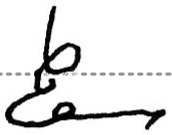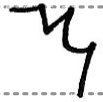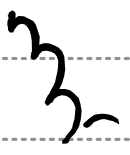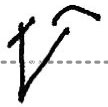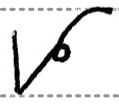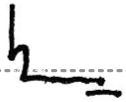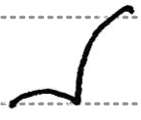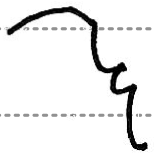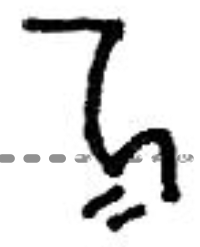Why hello everyone! Happy pi day!! This week I’m pleased to introduce you to my latest project: learning Teeline. Teeline is a shorthand method that I set out to learn because… it looks cool? It could possibly be useful for taking notes during lectures? Honestly, because I felt like it.
I have collected all of my notes into a (hopefully) intelligible format, and I thought I’d share them with you!
The alphabet
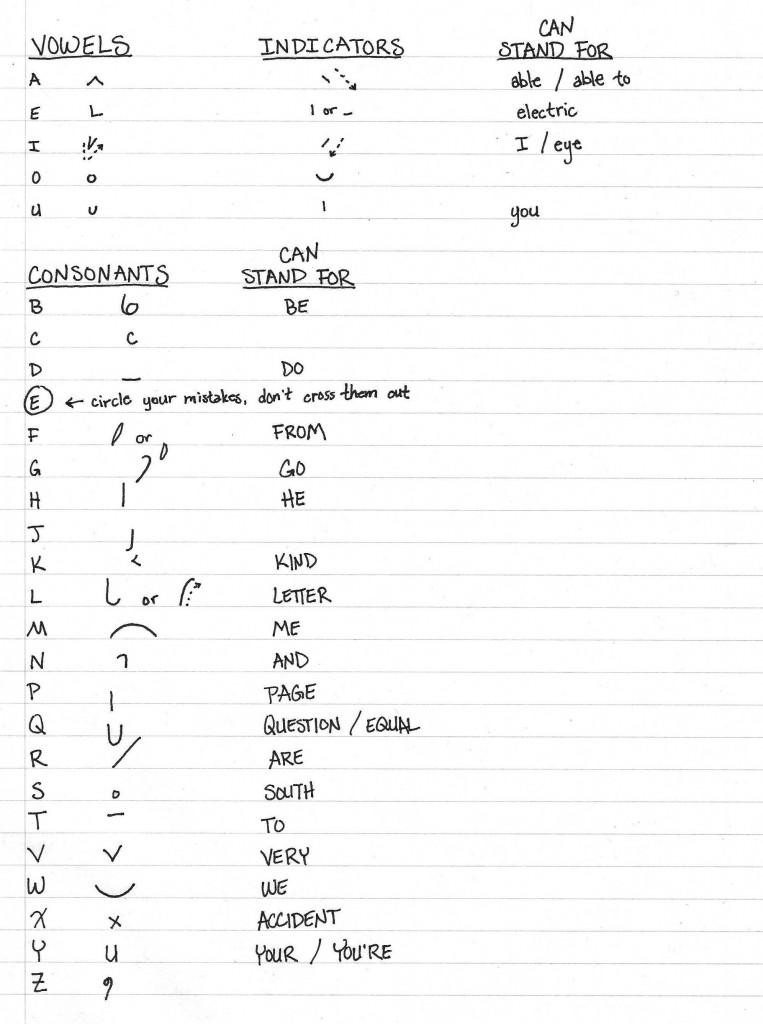
Note: only use the full vowel for the hard sound, or to represent the words as noted. Otherwise use the indicator.
Joining letters and writing words
This article has a fairly comprehensive overview of the rules for Teeline, but here are the basics:
- Join letters into words as they would be in cursive: the second letter starts where the first ends, etc.
- Cut out all intermediate vowels. Sntncs shld rd lk ths.
- Explicitly indicate vowels if they begin or end a word.
- Exclude silent and double letters: right = rt, numb = nm
- Write vowels much smaller than consonants.
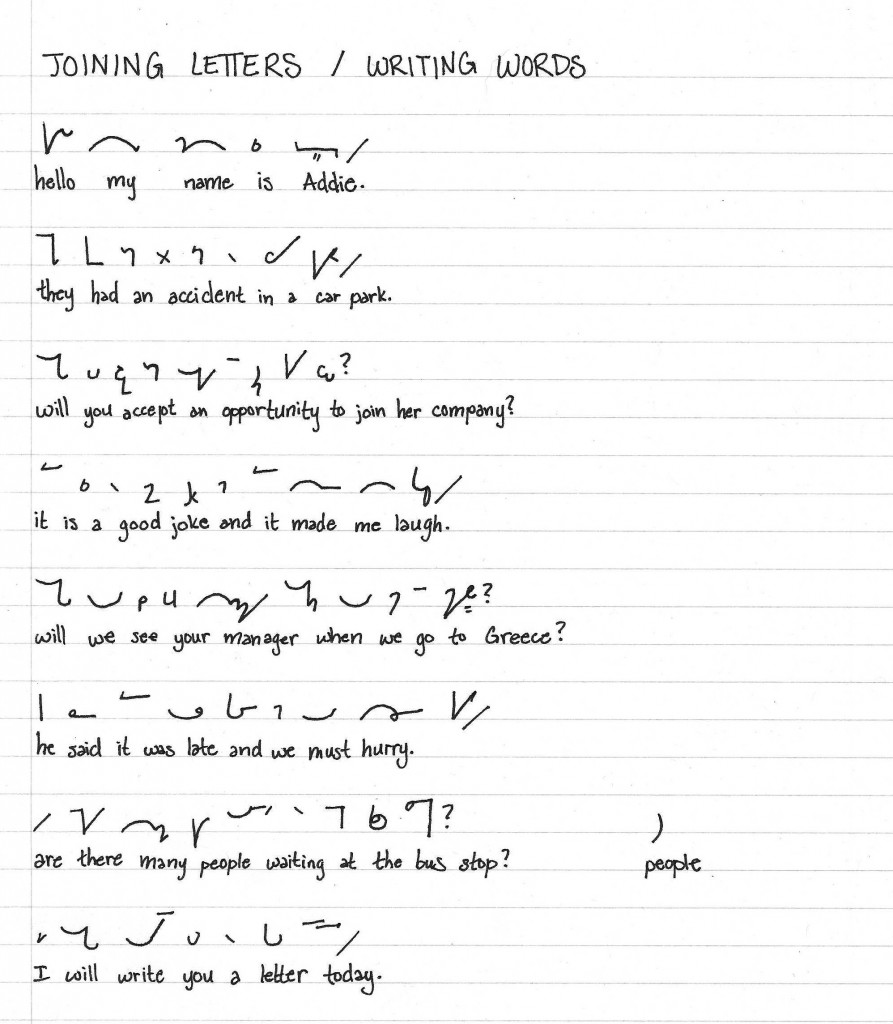
Things to note in the image:
- Proper nouns (or other capitalized words) have a double-dash underneath them.
- ‘T’/’D’ basically look the same in the middle or end of words; this doesn’t matter too much because they make a very similar sound and Teeline is partly phonetic.
- Use abbreviations: opportunity = opr, company = co
- ‘K’ joins up on the side (rather than the bottom) of tall letters like ‘H’, ‘J’, and ‘P’.
- Use phonetic spellings: laugh = lf
- I like to include an ‘S’-shape above a soft ‘C’: Greece = grsc
- You can abbreviate ‘people’ to a single ‘P’/’L’ blend.
- ‘At’ is just an ‘A’ at the ‘T’ position.
- ‘S’ is written inside of ‘B’.
- ‘T’ and ‘D’ are dis-joined from ‘R’: ‘T’ above the ‘R’ and ‘D’ below it. They are also dis-joined from each other, with ‘T’ written above the previous letter and ‘D’ below it.
Avoiding awkward shapes
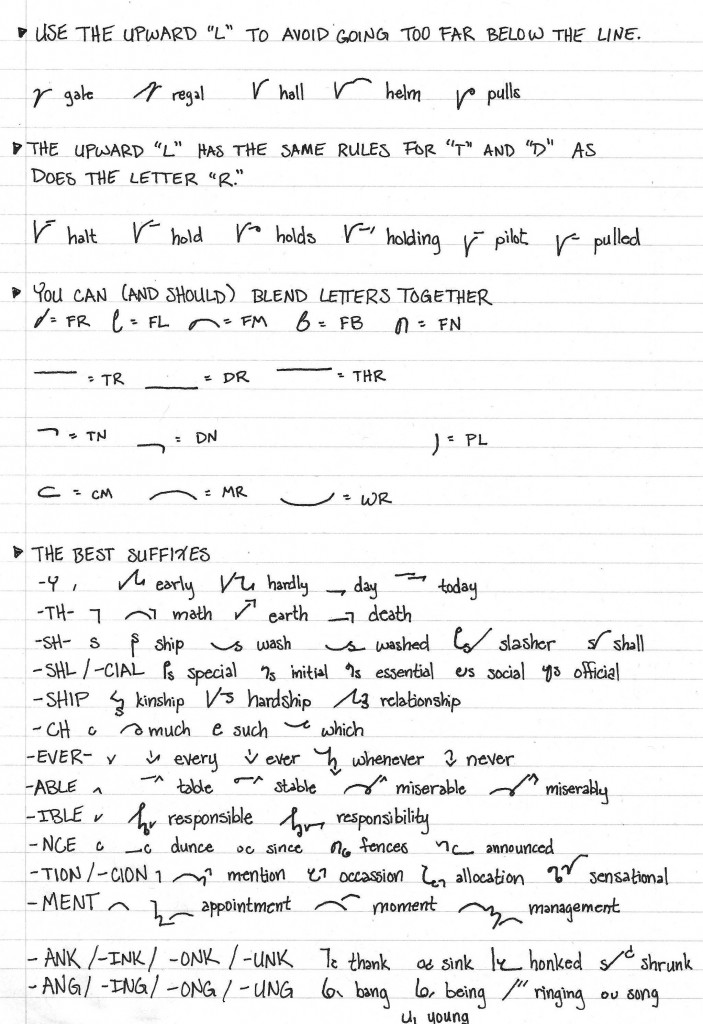
Also note that you can use ‘-XNK’ to represent ‘-THXNK’ and similarly ‘-XNG’ to represent ‘-THXNG.’
Edit 24-Apr-2018: I have started curating my OWN Teeline dictionary. I highly recommend checking it out! If there’s a word you want to find but can’t, leave a comment. I’d be happy to add it. 😀
When in doubt, I recommend checking this Teeline dictionary for the preferred “spelling.”
Common Word Groupings
As you speed up and get better at Teeline, you’ll notice certain words often come together. You can combine these into a single group. These are the groups I use the most, but you can find a comprehensive list of word groupings in this book.
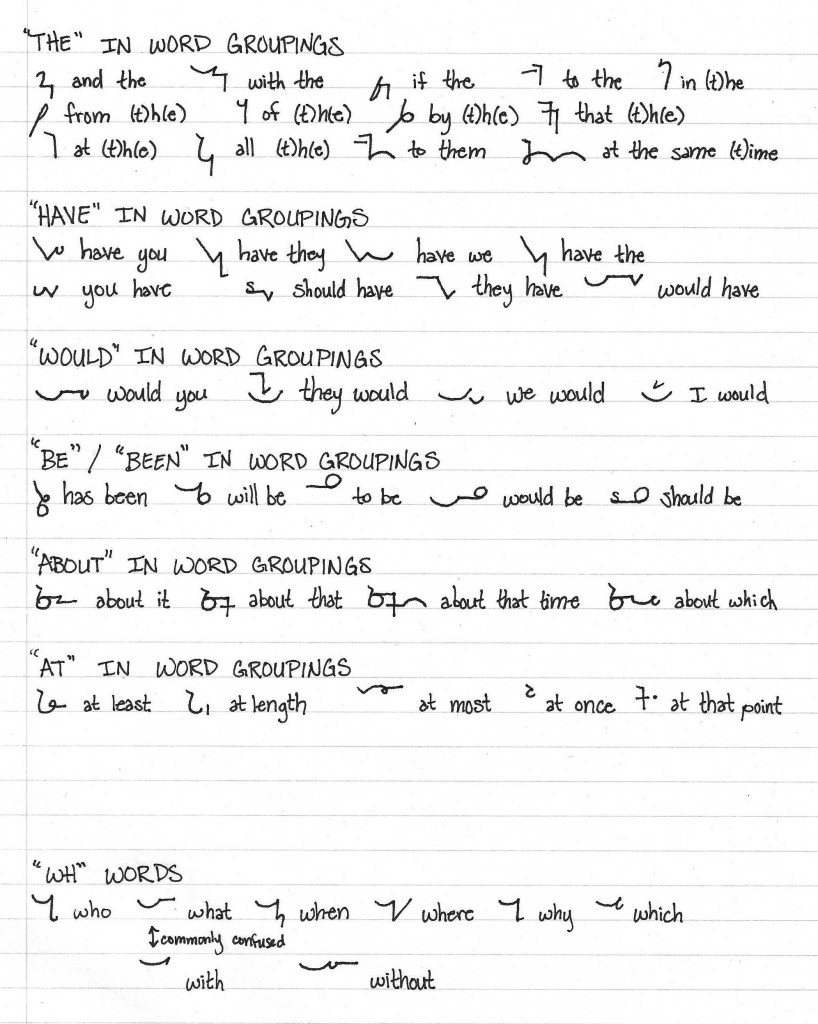
I’ve also included ‘WH’ words because I found it very easy to mix those up. I often interchange ‘what’ and ‘with’ and am working on fixing that.
Strategies for learning Teeline
Don’t try to learn everything all at once. Start by drilling the alphabet until you’ve got that down pat. Then just start linking words together and see how that goes. I would start each morning by reading my previous day’s work, circling and fixing mistakes, and seeing what was difficult to read and why. Then I’d transcribe a new passage to be reviewed the next day.
I noticed pretty quickly what letter combinations were very difficult to write, so I worked blends into my shorthand very quickly. ‘TR’ and ‘DR’ were some of the best. I thought it would be hard to distinguish them from the non-blended characters, but I actually found it quite easy. It makes it soooo much easier to write, as well.
Certain suffixes are also terribly awkward. ‘NG’ is one of the most awkward character combinations ever. I was super excited to figure out the ‘-XNG’ suffix set. I tried to let other suffixes come naturally.
If I ever found myself thinking “there has to be a better way to write this word,” then I would look it up in the dictionary, and usually there was, indeed, a better way to write it. My point is that rather than try to memorize all these rules, I let my natural curiosity provide the impetus for learning each new rule at my own pace.
Currently I’m mostly focused on word groupings. This is particularly challenging for me because I naturally want each group to be one word. I’m just taking it one day at a time, trying to use groupings as they make sense to me. I’m sure I’ll evolve more and more confidence here as I practice more.
This is about the level of Teeline I’m at right now:
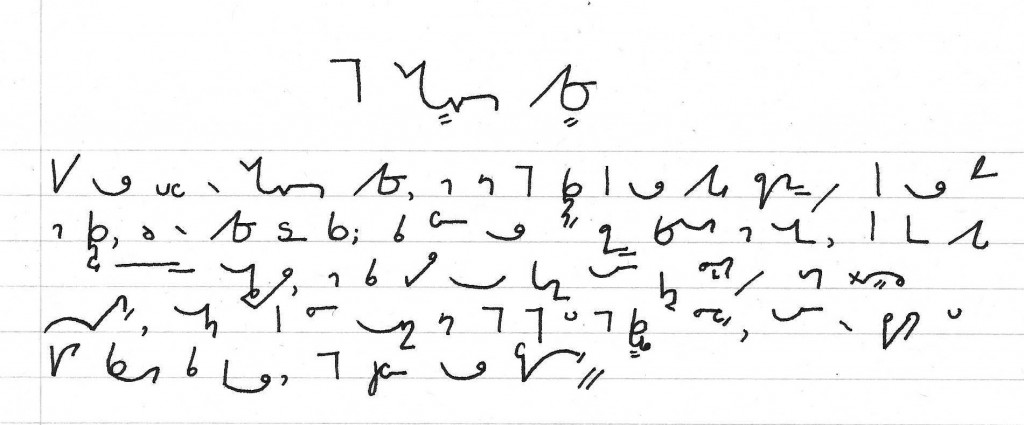
The text says:
Here was once a velveteen rabbit, and in the beginning he was really splendid. He was fat and bunchy, as a rabbit should be; his coat was spotted brown and white, he had real thread whiskers, and his ears were lined with pink sateen. On Christmas morning, when he sat wedged in the top of the Boy’s stocking, with a sprig of holly between his paws, the effect was charming.


























































